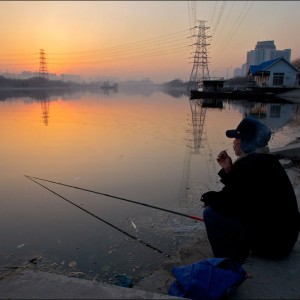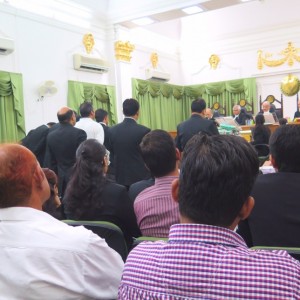Federal Water Tap, November 17: New Data Reveals Significant Shifts in U.S. Agriculture
The Rundown
U.S. irrigation moves east and increases its efficiency. A climate deal with China includes water-energy research, while Senate Energy Committee passes water-energy legislation. The Obama administration pledges $US 3 billion for a green climate fund. The Senate prepares for a Keystone XL vote. California hopes to pipe desalinated water from Mexico. A New Mexico senator wants to protect forests and watersheds.
“U.S. Department of Agriculture research needs to respond to the fact that irrigation is moving east. We need to make the case to Congress that we should add people and laboratories in those states that haven’t looked at irrigation management before.” – Steve Evett, USDA Agricultural Research Service soil scientist, talking about new federal data showing more irrigation in the eastern United States.
“They’ll bring ideas and we’ll bring ideas and we’ll find where the most value is.” – Robert Marlay, U.S. director of the U.S.-China Clean Energy Research Center, on the direction of a new research partnership with China, to investigate the connections between water and energy use.
By the Numbers
54: percent of U.S. irrigation water that came from aquifers in 2013 (USDA)
30: percent increase in the number of more-efficient micro-irrigation systems in the United States between 2008 and 2013 (USDA)
$US 3 billion: Money pledged to the Green Climate Fund, which will help poor countries adapt to climate change (White House)
Reports and Studies
Irrigation
U.S. farms are using less water per acre to irrigate crops while more farmers in the eastern states are investing in irrigation equipment, according to new federal data. Published every five years, the Farm and Ranch Irrigation Survey is the most complete set of state-level data on farm-water use, equipment, and practices.
Weather Data
October was the fourth warmest in the 120-year historical record, according to the National Oceanic and Atmospheric Administration. California marked its warmest January-October period.
News Briefs
Climate Deal
The world’s top two carbon polluters agreed to new emissions limits, in a non-binding deal announced in Beijing during President Obama’s meeting with President Xi Jinping of China.
One of the provisions of the historic agreement calls for a water-energy research program, organized under the guidance of the U.S.-China Clean Energy Research Center (CERC). A research agenda for the five-year, $US 50 million program will be hashed out over the next nine months, Robert Marlay, U.S. director of CERC, told Circle of Blue.
Water-Energy Bill
Legislation to create an interagency council to coordinate federal research and data collection related to water and energy passed the Senate Energy Committee. The bill is sponsored by Alaska Republican Lisa Murkowski.
Klamath River Bill
The Senate Energy Committee also approved revisions to a bill to restore the Klamath River. State officials in California and Oregon, the two states in the watershed, will now have greater authority in deciding whether to remove four dams that have been at the center of the restoration debate.
On the Radar
Keystone XL Vote
The Senate scheduled a vote for Tuesday on the divisive Keystone XL pipeline. Senate Republicans asked President Obama for the administration’s position, forcing the president to confront a major piece of fossil fuel infrastructure that he has successfully avoided for six years.
Water Pipeline
The U.S. State Department and a water district in southern California will collaborate on an environmental review of a water pipeline. The conduit will carry up to 50 million gallons desalinated water per day from Mexico into San Diego County. Comments on what issues the review should consider are due December 14 and can be submitted at www.regulations.gov.
Watershed Protection Bill
As a dry western state, New Mexico worries about forest fires and water availability. A bill introduced by the state junior senator, Democrat Martin Heinrich seeks to address both issues. The Restoring America’s Watersheds Act establishes a program for collaboration between cities and the U.S. Forest Service for reducing fire risk in watersheds critical for drinking water supplies. The bill allows for federal funding, but it asks for no money directly.
Federal Water Tap is a weekly digest spotting trends in U.S. government water policy. To get more water news, follow Circle of Blue on Twitter and sign up for our newsletter.
Brett writes about agriculture, energy, infrastructure, and the politics and economics of water in the United States. He also writes the Federal Water Tap, Circle of Blue’s weekly digest of U.S. government water news. He is the winner of two Society of Environmental Journalists reporting awards, one of the top honors in American environmental journalism: first place for explanatory reporting for a series on septic system pollution in the United States(2016) and third place for beat reporting in a small market (2014). He received the Sierra Club’s Distinguished Service Award in 2018. Brett lives in Seattle, where he hikes the mountains and bakes pies. Contact Brett Walton






Leave a Reply
Want to join the discussion?Feel free to contribute!